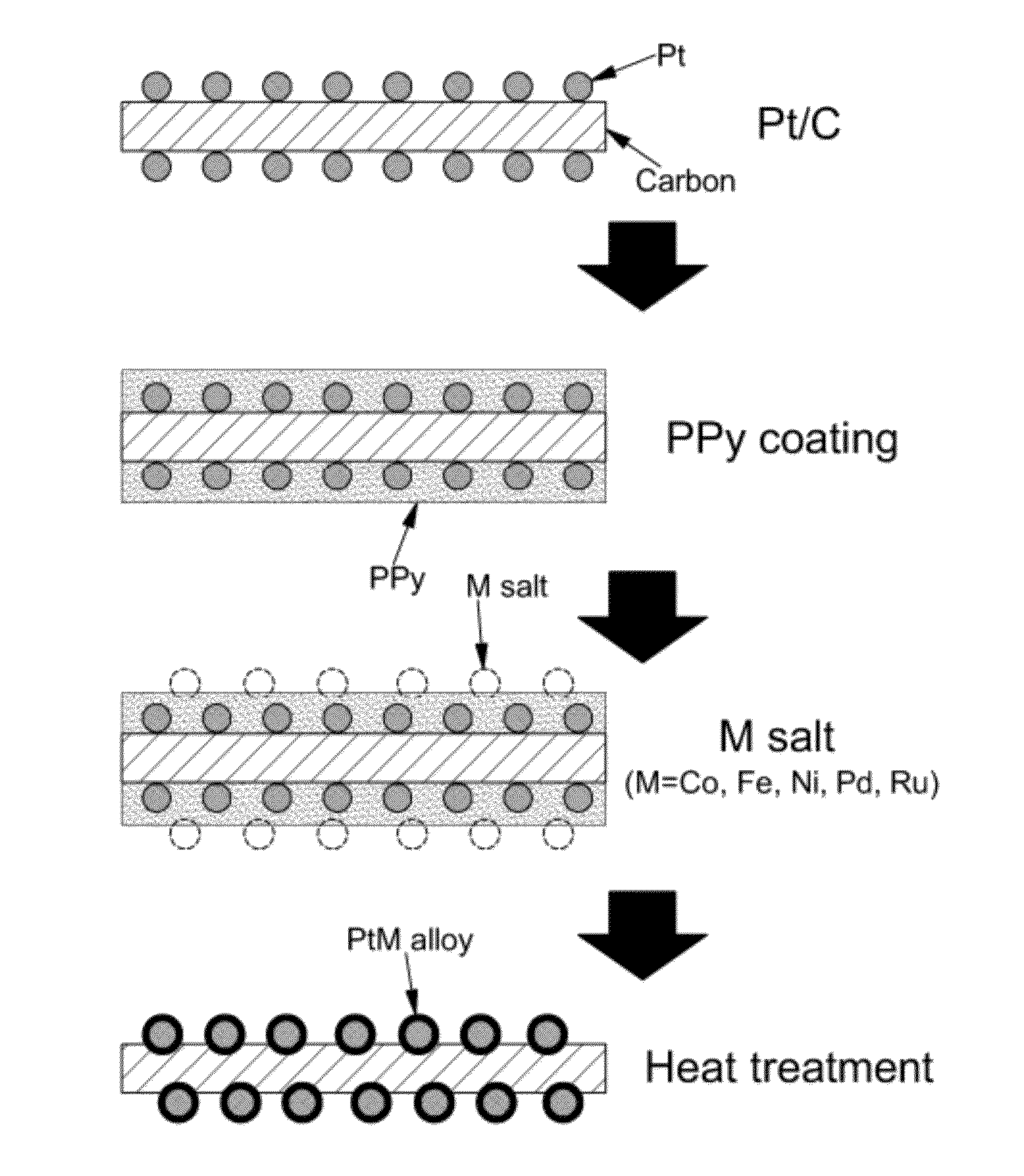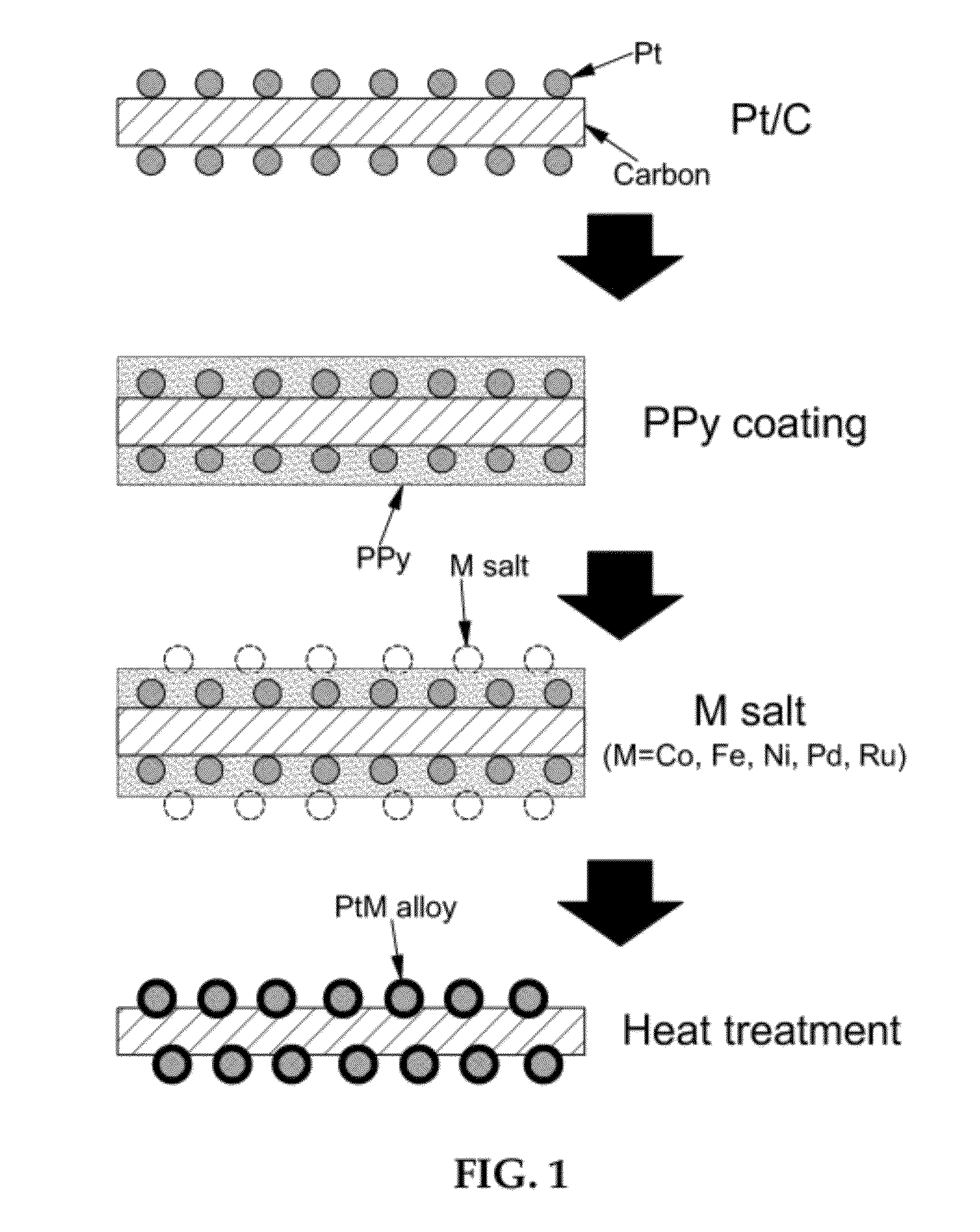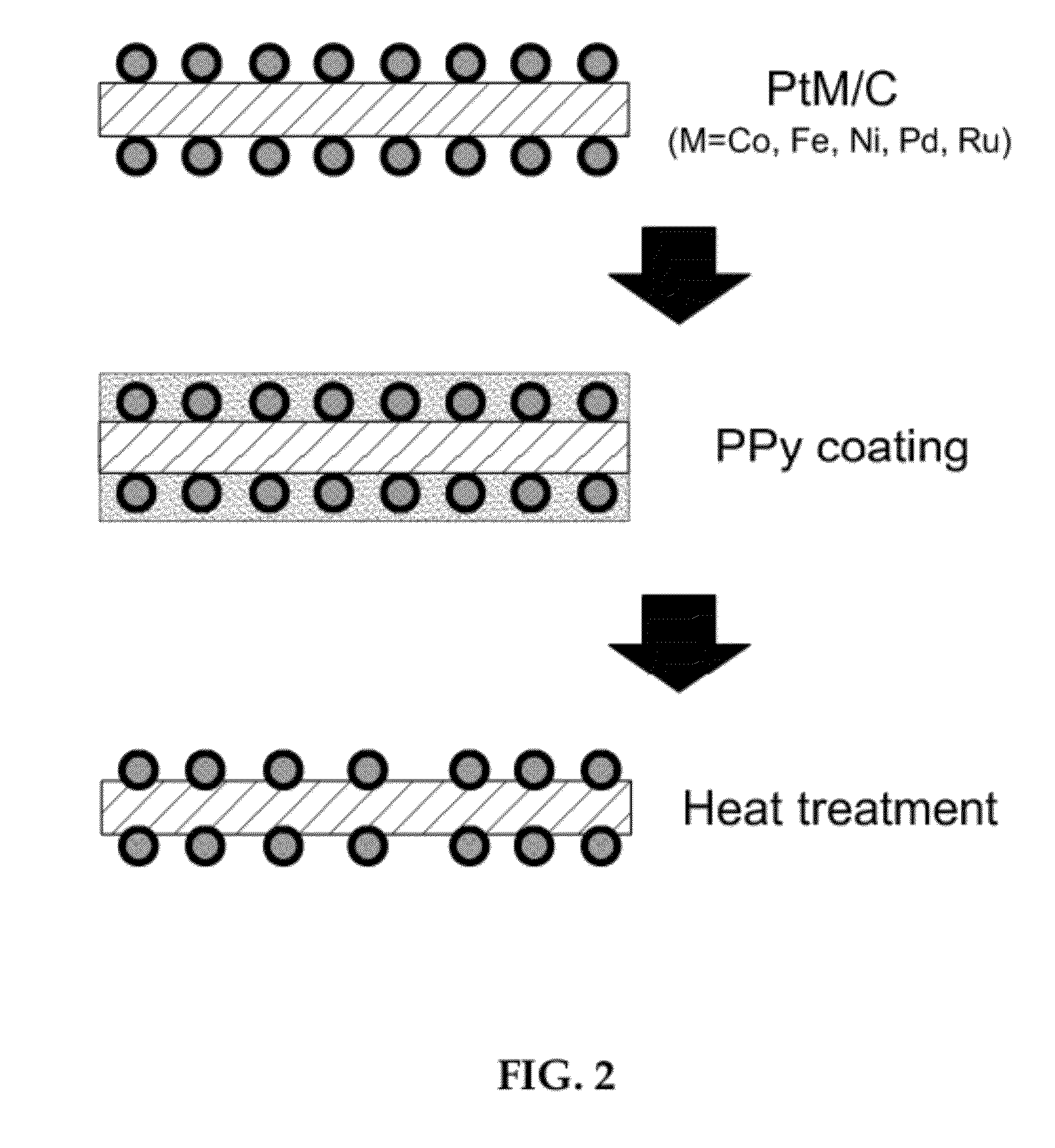Preparing an alloy catalyst using conductive polymer coating
a polymer coating and alloy catalyst technology, applied in the direction of organic compound/hydride/coordination complex catalysts, physical/chemical process catalysts, cell components, etc., can solve the problems of limited platinum reserves, voltage loss, limitation on reducing the use of platinum in platinum catalysts, etc., to increase the degree of alloying, reduce the dissolution out of transition metals, and increase the platinum concentration on the catalyst surface
- Summary
- Abstract
- Description
- Claims
- Application Information
AI Technical Summary
Benefits of technology
Problems solved by technology
Method used
Image
Examples
example 1
Preparation of Alloy Catalyst Using Platinum Catalyst Supported on CNF
[0038]1-Pyrenecarboxylic acid (1-PCA, 250 mg) was stirred in ethanol (400 mL) for 30 minutes. Herringbone-type carbon nanofiber (CNF, 500 mg) was added to the 1-PCA solution and stirred for 6 hours. Then, CNF doped with 1-PCA was recovered through filtration under reduced pressure. 1-PCA was introduced to CNF in order to form π-π interaction between pyrene and graphene of CNF. The 1-PCA-doped CNF has a hydrophilic surface and allows easy supporting of platinum. The 1-PCA-doped CNF (140 mg) was added to ethylene glycol (25 mL) and stirred for 10 minutes. Then, after adding NaOH (100 mg), the mixture was further stirred for 10 minutes. The concentration of NaOH was 0.1 M. NaOH serves to adjust pH for control of the platinum particle size. Subsequently, after adding PtCl4 (150 mg) and stirring for about 10 minutes, the mixture was refluxed at 160° C. for 3 hours. Then, platinum ions are reduced and adsorbed on the su...
example 2
Preparation of Alloy Catalyst Using Platinum Catalyst Supported on CNC
[0042]An alloy catalyst was prepared in a manner similar to Example 1, except for using carbon nanocage (CNC) instead of CNF and carrying out heat treatment at 900° C.
example 3
Preparation of Alloy Catalyst Using Platinum-Cobalt Catalyst supported on CNF
[0043]A platinum-cobalt catalyst was prepared using CNF as a support. CNF (130 mg) was stirred in ultrapure water (25 mL) for 10 minutes. Then, after adding PtCl4 (150 mg) and CoCl2 (19.3 mg), the mixture was stirred for 10 minutes. An aqueous solution of NaBH4 prepared by dissolving NaBH4 (224.7 mg) in ultrapure water (25 mL) was used as a reducing agent. Upon completion of reduction, the platinum-cobalt catalyst supported on CNF was recovered by filtration under reduced pressure, washed several times with ultrapure water, and dried at 160° C. for 1 hour.
[0044]The prepared platinum-cobalt catalyst was coated with PPy and heat treated in the same manner as Example 1 to obtain an alloy catalyst.
PUM
| Property | Measurement | Unit |
|---|---|---|
| temperature | aaaaa | aaaaa |
| temperature | aaaaa | aaaaa |
| particle size | aaaaa | aaaaa |
Abstract
Description
Claims
Application Information
 Login to View More
Login to View More - R&D
- Intellectual Property
- Life Sciences
- Materials
- Tech Scout
- Unparalleled Data Quality
- Higher Quality Content
- 60% Fewer Hallucinations
Browse by: Latest US Patents, China's latest patents, Technical Efficacy Thesaurus, Application Domain, Technology Topic, Popular Technical Reports.
© 2025 PatSnap. All rights reserved.Legal|Privacy policy|Modern Slavery Act Transparency Statement|Sitemap|About US| Contact US: help@patsnap.com



